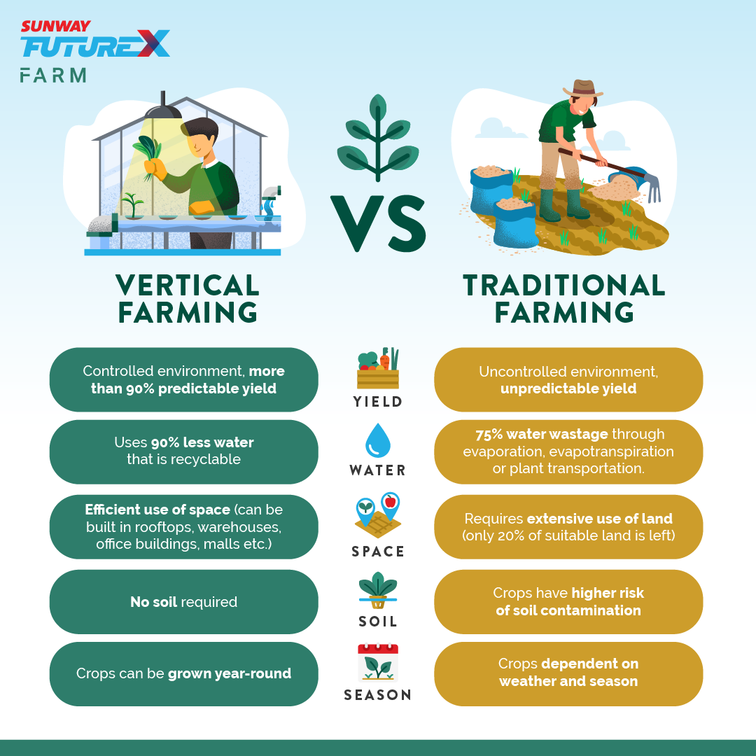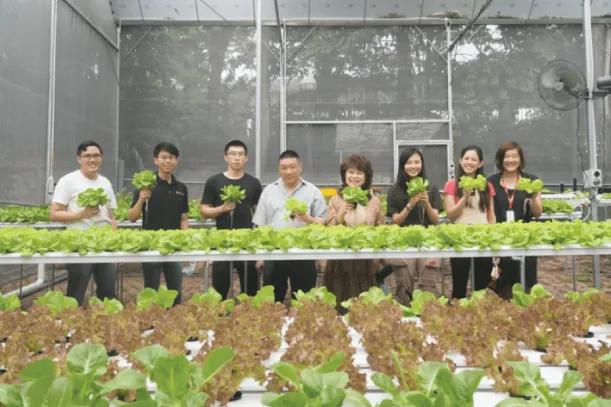From Farm to Table: Sunway’s FutureX Farm’s First Harvest + FAQ
By the end of 2020, 15,000 vegetables were harvested and 500 families were nourished from them. The team grew 50 varieties of vegetables and trained 50 talents as well.
Sunway University students and staff are able to conveniently purchase same-day harvest vegetables for personal consumption.
At the same time, the Campus with a Conscience Team at Sunway University took this opportunity to interview Koo Tse Chien, the Community Manager at FutureX Farm.
.png)
“The vegetables are very fresh and taste so good! I really enjoyed them a lot!”- FutureX Farm produce survey participant.
Frequently Asked Questions:
1) What is grown at FutureX Farm and how is it grown?
At FutureX, we grow a variety of vegetables and herbs.
Our vegetables are hydroponically-grown in nutrient-rich solutions, without soil. No pesticides are applied. Also, because of the integrated piping and controlled environment, minimal maintenance is required.
.png)
Bags of harvested vegetables, each bag contains 0.8 – 1.2 kg of fresh produce
2) Why an urban farm?
As urban populations grow to nearly 80% of the earth’s population by 2050, more food is required. Right now, most of our food is grown off-site, meaning we don’t grow our own vegetables or rear our own fish. This model of food production, if continued into the future, will pose a huge resource strain on our transportation systems, land fertility and fresh water.
An urban farm brings the farm into the city. This reduces the need for long-distance transport, packaging food in layers of protective material whether paper or plastic, and has numerous wellbeing effects for city dwellers.

FutureX Farm has vertical farming which allows for efficient use of space
3) Why does FutureX Farm use vertical hydroponic farming instead of traditional farming?
At FutureX Farm, we use vertical farming because it allows for the production of healthy vegetables with 90% less water and no soil, not to mention the efficient use of space.
Industrial agriculture typically uses up a lot of resources in terms of irrigation infrastructure, soil, water, fertiliser and pesticides which would cause environmental and health impacts. Our approach is not meant to replace traditional farms, which are usually located in the outskirts, but to complement our nation’s food security by growing more safe and clean produce in urban environments.
Historically, since the start of large-scale industrial agriculture in the early 1900s, humans have degraded arable land in the name of food production, and it takes a long time to restore the fertility of soil once degraded. By using no soil, FutureX Farm avoids further degradation of land.
.png)
Sunway Education Group CEO Dr Elizabeth Lee pays a visit to FutureX Farm
4) Lastly and most importantly, how does FutureX Farm address the issue of climate change?
One of the main ways to address climate change is to figure out how to reduce our carbon footprint from food production. The use of no soil and low water resources at FutureX Farm reduces the carbon footprint of our vegetables.
Did you know: the process of growing, harvesting, processing, packing and transporting food is responsible for 25% of global greenhouse gas emissions? Of this 25%, over one third is from crop production. So, getting fruits and vegetables from farm to plate is a costly affair.
Because human agricultural activity is a main driver of climate change from its greenhouse gas emissions, we initiated FutureX Farm with the aim to develop young talents in this area. FutureX Farm serves as an innovation hub for urban farming professionals, young talents, startups and industry players to come together to create transformative solutions for food and agritech.
Greenhouse gases have negative effects on both the natural environment and to human health. More greenhouse gasses released into the atmosphere leads to greater imbalance in the Earth’s climate system. With this in mind, we work with urban farming enthusiasts to develop localised low-carbon approaches to urban farming with the aim of addressing the resource drain on food systems in light of a growing urban population.




